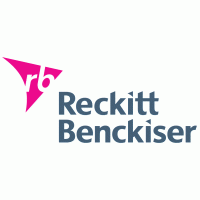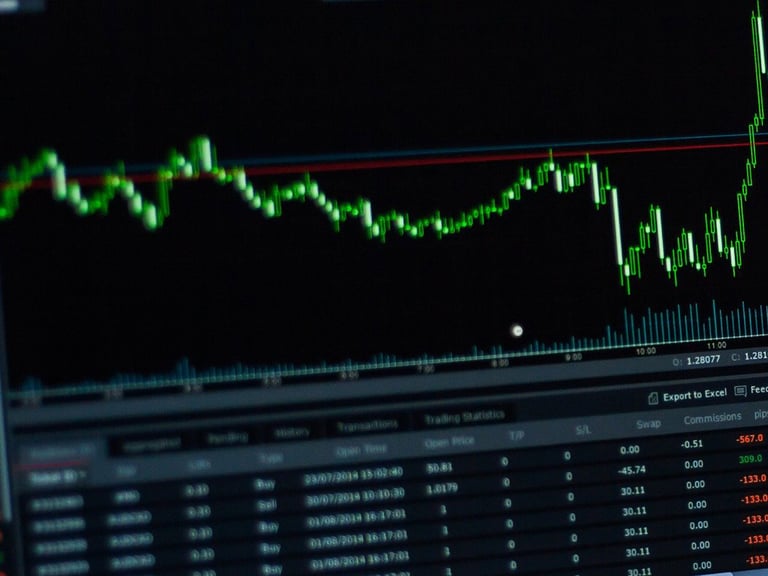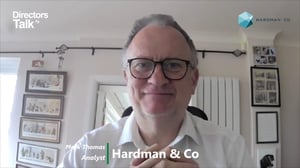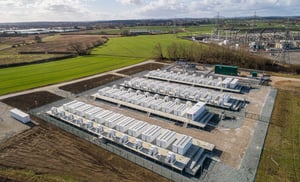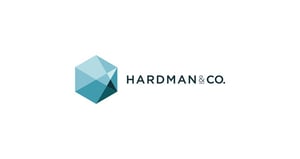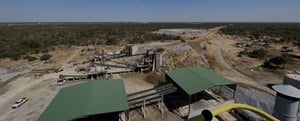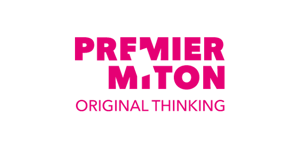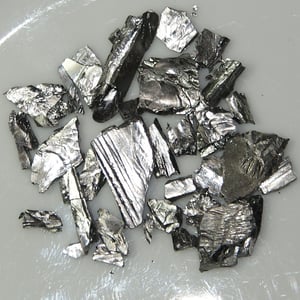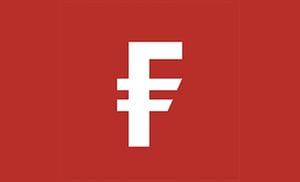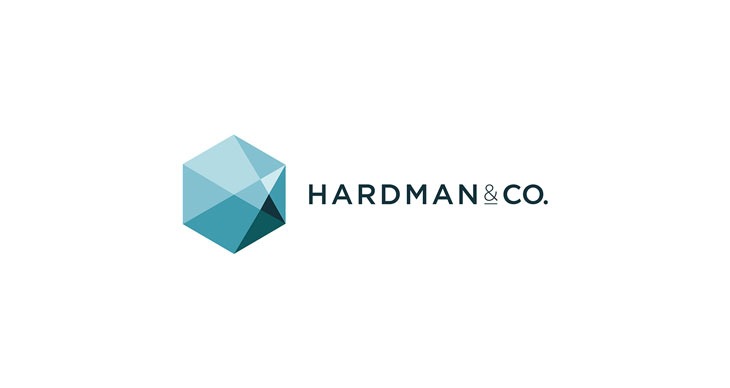Reckitt Benckiser Group PLC (LON:RB), today announced full year results for 2018.
|
Results at a glance (unaudited) |
Q4 |
% change actual exchange |
% change constant exchange |
FY |
% change actual exchange |
% change constant exchange |
||
|
Continuing operations |
||||||||
|
Net Revenue |
3,339 |
+2% |
+4% |
12,597 |
+10% |
+15% |
||
|
– Pro-forma growth1 |
+3% |
|||||||
|
– Like-for-like growth1 |
+4% |
+3% |
||||||
|
Operating profit – reported |
3,047 |
+11% |
+16% |
|||||
|
Operating profit – adjusted1 |
3,358 |
+8% |
+12% |
|||||
|
Net income2 – reported |
2,166 |
-36% |
-33% |
|||||
|
Net income2 – adjusted1 |
2,410 |
+7% |
+11% |
|||||
|
EPS (diluted) – reported |
305.5 |
-36% |
||||||
|
EPS (diluted) – adjusted1 |
339.9 |
+7% |
||||||
|
Total operations (including discontinued operations) |
||||||||
|
Net income2 – reported |
2,161 |
-65% |
-63% |
|||||
|
Net income2 – adjusted1 |
2,410 |
+4% |
+9% |
|||||
|
EPS (diluted) – reported |
304.8 |
-65% |
||||||
|
EPS (diluted) – adjusted1 |
339.9 |
+5% |
||||||
1 Non-GAAP measures are defined on page 2 and 3
2 Net income attributable to the owners of the parent
Highlights
· Pro-forma and LFL growth in 2018 of +3%. +2% from volume and +1% from price / mix on a pro-forma basis. Growth was broad-based and innovation-led across both Business Units (BUs). Strong progress in e-commerce channels, contributing to 9% of the Health BU’s net revenue.
· Balanced LFL growth in Q4 of +4%. In both Health and Hygiene Home, LFL growth was +4% – reflecting further progress in Health, and continued strong momentum in Hygiene Home.
· The RB2.0 operating structure is delivering and work to create two structurally independent business units remains on track for mid-2020.
· Accelerated delivery of MJN synergies. In-year synergies of £158m ($211m) delivered. We remain on track to achieve our increased synergy target of $300m.
· Adjusted operating margin was 26.7%. +20bps on a pro-forma basis and a decline of -60bps on a reported basis.
· Adjusted diluted EPS was 339.9p, benefitting by 10p from the resolution of various tax matters.
· The Board recommends a final dividend of 100.2p per share (2017: 97.7p), an increase of +3%. Total dividend for 2018 of 170.7p (2017: 164.3p), an increase of +4%.
· Free cash flow generation of £2,029m (2017: £2,129m), reflecting strong cash conversion.
· 2019 LFL net revenue growth targeted at +3-4%. Adjusted operating margin expected to be maintained in 2019.
Commenting on these results, Rakesh Kapoor, Chief Executive Officer, said:
“2018 was a year of good financial progress, achieved in an environment of both significant change within the company, and challenging market conditions. We delivered the upper end of our 2018 revenue growth target, and accelerated the delivery of MJN cost synergies versus our ingoing expectations.
2018 was also a year of significant strategic progress. RB2.0 represents a platform to transform RB for growth and outperformance. In 2018 we fully integrated MJN to create RB Health. And at the same time we created RB Hygiene Home, which has reignited growth with a more focussed and agile organisation.
As we look to the future, we are well positioned for long term, sustainable growth, from the excellent portfolio of brands within each of our more focussed and agile Business Units.
For 2019 we expect momentum to continue, and target +3-4% LFL net revenue growth. We expect to maintain the adjusted operating margin as we generate our usual RB cost and efficiency savings, and deploy them into building two even stronger businesses.”
Chris Sinclair, Chairman, said:
“RB has been on a well-established journey with a focussed, strategic evolution from a household cleaning company to a world leader in consumer health. Our most recent acquisition, MJN, has been a catalyst for RB2.0 – the creation of two end-to-end accountable Business Units. RB2.0 provides a platform for future growth and outperformance in each Business Unit. We remain committed to executing on this important project and will continue to evaluate opportunities to maximise shareholder value from RB2.0.
We are also under way in the search for a successor to Rakesh, whether internal or external, who will be a fit with the distinctive culture of RB and consistent with execution of RB2.0.”
Basis of Presentation and Non-GAAP measures
Throughout the report, certain measures are used to describe RB’s financial performance which are not defined by IFRS.
Adjusted Measures
The Executive Committee of the Group assesses the performance based on Net Revenue and certain Adjusted measures which exclude the effect of Adjusting items.
As described in Note 3, Adjusting items are significant items included in operating profit, net finance expense or income tax expense, which are relevant to an understanding of the underlying performance of the business. These comprise exceptional items, other adjusting items, and the reclassification of finance expenses on tax balances. Management believes that the use of adjusted measures provides additional useful information about underlying trends.
The table below reconciles the Group’s reported statutory earnings measures to its adjusted measures for the year ended 31 December 2018.
|
Adjusting: |
|||||
|
Adjusting: |
Adjusting: |
Finance |
|||
|
Exceptional |
Other |
expense |
|||
|
Reported |
items |
items |
reclass |
Adjusted |
|
|
Year ended 31 December 2018 |
£m |
£m |
£m |
£m |
£m |
|
Operating Profit |
3,047 |
233 |
78 |
– |
3,358 |
|
Net finance expense |
(325) |
– |
– |
29 |
(296) |
|
Profit before income tax |
2,722 |
233 |
78 |
29 |
3,062 |
|
Income tax expense |
(536) |
(50) |
(17) |
(29) |
(632) |
|
Net income for the year from continuing operations |
2,186 |
183 |
61 |
– |
2,430 |
|
Less: Attributable to non-controlling interests |
(20) |
– |
– |
– |
(20) |
|
Continuing net income attributable to owners of the parent |
2,166 |
183 |
61 |
– |
2,410 |
|
Net loss for the year from discontinued operations |
(5) |
5 |
– |
– |
– |
|
Total net income attributable to owners of the parent |
2,161 |
188 |
61 |
– |
2,410 |
Adjusted Net Income is used in the calculation of Adjusted EPS. Adjusted EPS is defined as Adjusted Net Income attributable to owners of the parent divided by the weighted average number of ordinary shares. A reconciliation is included in Note 5.
The adjusted tax rate is defined as the Adjusted continuing income tax expense as a percentage of Adjusted profit before tax.
Other non-GAAP measures and terms
Like-for-Like (“LFL”) growth excludes the impact on Net Revenue of changes in exchange rates, acquisitions, disposals and discontinued operations. MJN was acquired on 15 June 2017 and therefore the results of IFCN are included within RB’s LFL results from 15 June 2018. LFL growth also excludes Venezuela. A reconciliation of LFL to reported Net Revenue growth by operating segment is shown on page 6.
Pro-forma growth excludes the impact on Net Revenue of changes in exchange rates, acquisitions, disposals and discontinued operations. It includes the results of MJN for the entire comparative period. Pro-forma growth also excludes Venezuela.
Constant exchange rate adjusts the actual consolidated results such that the foreign currency conversion uses the same exchange rates as were applied in the prior year.
Free Cash Flow, the Group’s principal measure of cash flow, is defined as net cash generated from operating activities (excluding discontinued operations) less net capital expenditure. Free cash flow reflects cash flows that could be used for payment of dividends, repayment of debt or to fund acquisitions or other strategic objectives. A reconciliation of cash generated from operations to Free Cash Flow is shown on page 13.
Brand Equity Investment (“BEI”) is the marketing support designed to capture the voice, mind and heart of our consumers.
Continuing operations includes MJN since its acquisition on 15 June 2017 and excludes RB Food and any charges related to the previously demerged RB Pharmaceuticals business that became Indivior. Net income from discontinued operations is presented as a single line item in the Group Income Statement.
Return on capital employed (ROCE) is defined as Adjusted Operating Profit after tax divided by monthly average capital employed. The Group has updated its definition and measurement of capital employed for 2018 and restated comparatives to be on a consistent basis. Capital employed comprises total assets less current liabilities other than borrowings-related liabilities. Total assets exclude cash, retirement benefit surplus, current tax and a technical gross-up to goodwill that arises because of deferred tax liabilities recorded against identified assets acquired in business combinations. Current liabilities exclude legal provisions recorded as a result of exceptional items and current tax.
Detailed Operating Review: Total Group
Full Year 2018
Total full year (“FY”) Net Revenue was £12,597m, with growth of +3% on both a pro-forma and LFL basis. Growth was balanced with relatively equal contributions from volume and price mix. The impact of consolidating our MJN business for a full 12 months in 2018 (versus 6.5 months in 2017) added +12% to growth. Total growth, at constant rates was therefore +15%, and at the upper end of our target of +14-15%. The majority of our revenue and profits are generated outside of the UK, and the translation impact of consolidating local business into our reporting currency, Sterling, resulted in a -5% reduction due to a stronger Sterling against the weighted average of currencies we operate in. Total growth at actual rates and including the impact of M&A was therefore +10% for the year.
Our Health Business Unit (BU) grew by +3% on a pro-forma basis and +2% LFL. Within the BU we saw improving trends across all of our segments. IFCN grew +3% on a pro-forma basis (2017: -1%) behind a combination of strong in-year market growth in Greater China, successful innovation and growth in new channels, despite the temporary supply disruption in Q3. OTC grew by +5% LFL with strong, broad-based growth across our key brands, offset by weakness in Mucinex due to the re-entry of private label variants during the year and lower than average incidence of cold and ‘flu in Q4. In the rest of Health (our wellness, VMS and hygiene brands), VMS brands saw strong growth across both North America and China; good growth in Durex and Dettol offset by weakness in Scholl, particularly in H1.
Our Hygiene Home BU saw significant improvement in 2018 with +4% LFL growth. This was due to a combination of innovation-led success and improved in-market execution. Growth was broad-based across our brands, led by growth in Harpic and Lysol, and strong performances also from Finish, Air Wick and Vanish.
On a geographical basis, Developing Markets contributed strong, high single-digit LFL growth across our base Health and Hygiene Home BUs. North America had a strong year of mid-single digit LFL growth as pricing improved in H2. Europe remains tough, a region where the pricing environment in particular is challenging.
The acquisition of MJN and the timing of its consolidation means there is some variation between reported and pro-forma results between gross and operating margin in 2018. In order to better understand these differences we have provided the following table and commentary:
|
(bps impact on Adjusted operating margin) |
% of Net Revenue |
Pro-forma basis1 |
Reported basis2 |
|
Gross Margin |
60.6% |
(70bps) |
(40bps) |
|
Brand Equity Investment (BEI) |
13.8% |
80bps |
10bps |
|
Other costs |
20.1% |
10bps |
(30bps) |
|
Operating Margin (adjusted) |
26.7% |
20bps |
(60bps) |
1 Pro-forma basis includes MJN for the entire comparative period. It is presented on an adjusted basis above.
2 Reported basis includes MJN in the comparative period from the date of acquisition. It is presented on an adjusted basis above.
Gross Margin was 60.6%, a decline of -40bps on a reported basis and -70bps on a pro-forma basis. The consolidation of MJN had a slightly positive mix effect. The margin decline was driven by the combination of input cost headwinds (which we expect to continue in the near term), and a tough, though improving, pricing environment. We also increased operating and capital expenditure slightly on capacity in a number of areas, to meet the needs of our customers. Gross margin was also negatively impacted by the temporary manufacturing disruption in our IFCN business including more expensive logistics costs as we sought to restock channels as quickly as possible in China.
Investment behind our brands (as defined by our BEI metric), was 13.8% of Net Revenue, an 80bps reduction on a pro-forma basis and 10bps reduction on a reported basis. We realised significant synergies in media planning and buying following the MJN acquisition.
Our fixed cost base was relatively stable in total, but with areas of increase broadly offset by reductions, reflecting the dynamic nature of the market and the company. Costs increased as a result of RB2.0, and increases in spend in many “digital” areas, but reduced with cost synergies associated with the MJN acquisition and RB’s usual efficiency programmes.
MJN cost synergies in 2018 were £158m ($211m) and a cumulative total of £178m ($236m) to the end of 2018, as we make significant and accelerated progress towards our total synergy target of $300m. In 2019 we expect the remaining synergies from the MJN acquisition to be broadly offset by a small year-on-year increase in operating costs associated with the RB2.0 infrastructure, as the new organisation structure was not fully staffed for the entirety of 2018.
Operating profit as reported was £3,047m, +11% versus FY 2017 (+16% constant), reflecting the impact of consolidating profits generated by our IFCN business for the full 12 months in 2018 (versus six and a half months in 2017), a relatively stable adjusted operating margin, and a reduction in adjusting items. Operating profit adjusting items were a pre-tax charge of £311m (2017: £385m). These items relate principally to the acquisition of MJN and the creation of RB2.0. Further details of adjusting items are set out in Note 3. On an adjusted basis, operating profit was ahead +8% (+12% constant) to £3,358m. The Adjusted Operating Margin for the Group declined -60bps to 26.7% on a reported basis, and +20bps on a pro-forma basis driven by declining gross margin from input costs, offset by efficiencies in BEI.
Net finance expense was £325m (2017: £238m) reflecting an approximate cost of 3% on net debt of around £10bn. This debt was incurred to finance the acquisition of MJN in mid-2017.
The adjusted tax rate was 21%, approximately 200bps lower than our guidance of 23%. Our tax charge in 2018 benefitted from the settlement of a number of tax issues during the year. We continue to expect our ongoing adjusted tax rate to be in the region of 23%. £29m of interest expenses arising on income tax balances was included within net finance expenses following the IFRIC 23 statement in 2017. We have included this within adjusted income tax and the adjusted tax rate.
Continuing net income attributable to owners of the parent as reported was £2,166m, a decrease of -36% (-33% constant) versus 2017, which benefited from a large non-cash tax release following tax reform in the US. On an adjusted basis, net income was £2,410m, +7% (+11% constant). Diluted earnings per share from continuing operations of 305.5 pence was -36% on a reported basis; on an adjusted basis, the growth was +7% to 339.9 pence.
Total reported net income attributable to owners of the parent was £2,161m, a decrease of -65% (-63% constant) versus 2017. The decline was due to exceptional items in 2017 in relation to the profit on sale of the RB Food business of £3,024m, a tax credit relating to the effect of US Tax Reform of £1,421m, and a charge of £296m in respect of ongoing investigations by the US Department of Justice (“DoJ”). On an adjusted basis, total net income was £2,410m, +4% (+9% constant) versus 2017.
Fourth Quarter 2018
Q4 Net Revenue was £3,339m, an increase of +4% on a LFL basis and +2% on an actual basis, reflecting negative translational FX due to the relative strength of Sterling versus a number of emerging market currencies. There was no impact of net M&A in the quarter.
Health delivered another quarter of progress with LFL growth of +4%. Within Health, IFCN grew by +5% LFL with strong growth in the US, driven by innovation success in both our Enfamil and Nutramigen brands, offset by a slow quarter in China. In China we experienced disrupted on-shelf availability, and some consequent loss in consumer demand from the temporary supply disruption in Q3. Plans are in place to improve our supply chain capacity, to regain lost consumer demand, and return to our targeted growth trajectory in the second half of 2019. Our OTC brands continue to perform well with +2% growth in the quarter, despite a decline in the incidence of cold and ‘flu and share loss in Mucinex due to the re-entry of private label variants. The combination of higher stock levels of our OTC brands at retailers due to lower incidence of cold and ‘flu in December, combined with continued low incidence in January 2019, will impact our OTC performance in Q1 2019. Our wellness, hygiene and VMS brands saw another quarter of progress, albeit still below category growth rates.
Hygiene Home delivered a fourth consecutive quarter of +4% LFL growth, a strong performance relative to market growth, which is currently in line with our medium term expectations of +2-3%. Growth in the quarter was broad-based across both our hygiene and home brand portfolio with strong performances from Harpic, Lysol, Air Wick and Vanish.
On a geographic basis, DvM had a strong quarter in both BUs, delivering +7% LFL growth in Health and 11% LFL in Hygiene Home. China (ex IFCN) had a strong performance across its key brands of Durex, Move Free and Dettol. India delivered double digit growth across both BUs as did Brazil. North America also saw strong, mid-single digit growth in the quarter, across both BUs, driven by IFCN, VMS brands, Lysol and Air Wick. Europe continues to see weakness with both BUs in decline. In Health, a weak start to the ‘flu season impacted sales of Strepsils and other local seasonal brands. In Hygiene Home pricing remains challenging.

